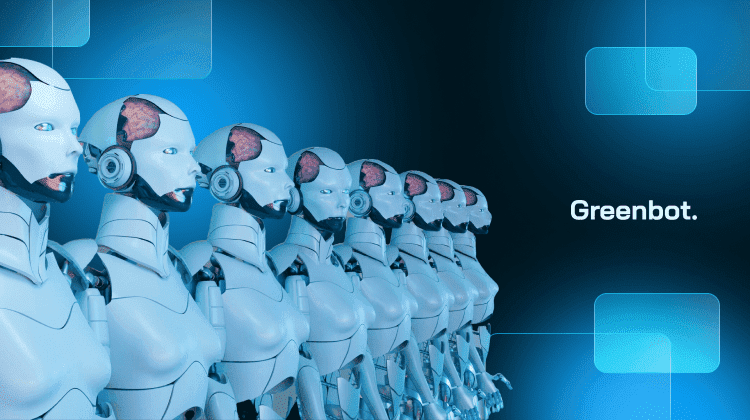
Robotics is a field that brings together engineering, AI, and design. It focuses on creating machines, known as robots, that can perform tasks on their own or with minimal help. For anyone wondering what robotics is, it involves technology that handles everything from assembling products to exploring space. Robotics is changing how we solve problems and make everyday tasks easier.
This guide will explain robotics meaning, its types, history, future, and challenges.
Understanding the Basics of Robotics
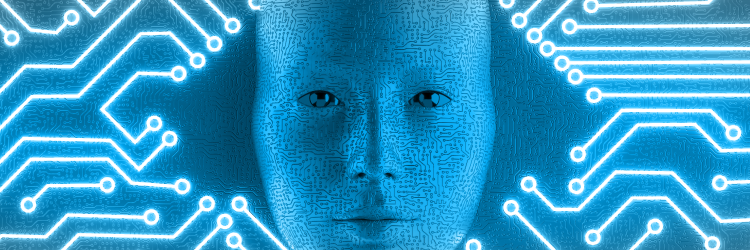
Definition of Robotics
Robotics combines science, engineering, and technology to create machines called robots. These robots can perform tasks ranging from basic routines to highly complex operations. The field combines concepts from artificial intelligence, mechatronics, and automation. These elements work together to improve how robots function and adapt to different tasks. From assembling vehicles to performing critical surgeries, robotics boosts efficiency and precision across industries.
The Evolution of Robotics Technology
The history of robotics technology spans centuries. It began with mechanical devices created in ancient Greece. These early machines laid the groundwork for significant inventions. One such breakthrough was “Unimate,” the first programmable robot developed by George Charles Devol in the 1950s. This robot transformed manufacturing by automating repetitive tasks.
Over time, advancements in AI and sensor technology have made robots smarter. They are now widely used in industries like healthcare and space exploration.
Core Components of Robotics Systems
Robots rely on several critical components, each playing a distinct role in their functionality:
- Sensors: Sensors are a robot’s way of perceiving the environment. They work like eyes and ears, gathering light, sound, or motion information. For example, cameras capture images while microphones detect sound. Light sensors react to changes in brightness. This data allows robots to make real-time decisions.
- Actuators: These are the motors and mechanisms that enable movement. They make robots walk, grip, or rotate parts to perform specific tasks. Actuators come in various forms, such as electric, pneumatic (using air), or hydraulic (using liquid). A robot arm, for instance, moves because actuators drive its joints.
- Control Systems: Often known as the robot’s brain, control systems process sensor data and guide actions. These systems ensure robots carry out tasks efficiently and adapt to changes in their surroundings. For example, the control system processes floor layouts in an autonomous vacuum to plan its cleaning route.
- AI Integration: AI gives robots the ability to think and adapt. It powers decision-making, allowing robots to handle unpredictable situations. For example, an AI-powered robot can recognize objects or learn new tasks over time. This component is vital for robots working in dynamic environments such as hospitals or factories.
Types of Robots
- Industrial Robots: These robots perform repetitive tasks like welding, painting, and assembly in factories. They ensure precision and efficiency, making them essential for large-scale production.
- Service Robots: Service robots handle everyday tasks like vacuuming, delivering packages, or assisting customers. They simplify routines and improve convenience in daily life.
- Humanoid Robots: These robots resemble humans and are used in research, customer service, and personal assistance. They mimic human gestures and interact naturally.
- Mobile Robots: Mobile robots move independently, often transporting goods in warehouses or exploring rough terrains like Mars.
- Autonomous Robots: These robots operate without human control and use sensors and AI. Examples include self-driving cars and drones performing aerial surveys.
Types of Robotics
- Humanoid Robots: Robots built to look and act like humans. They assist in caregiving, customer service, or tasks needing human-like interaction.
- Cobots: Robots that work safely alongside humans. They handle repetitive tasks, letting humans focus on complex work.
- Industrial Robots: These are heavy-duty robots used in factories. They improve efficiency in tasks like assembly and material handling.
- Medical Robots: Precision robots used for surgeries and patient care. They help doctors in procedures that need high accuracy.
- Agricultural Robots: Robots designed for farming tasks like planting and crop monitoring. They reduce manual labor and improve productivity.
- Microrobotics: Tiny robots for tasks like delivering medicine or inspecting small devices. They are essential in healthcare and electronics.
- Augmenting Robots: Wearable robots, like exoskeletons, that boost strength or mobility. They help people with demanding jobs or mobility issues.
- Software Bots: Digital robots that automate tasks like data analysis or customer service. They handle repetitive processes to save time.
What Are Some of the Common Types of Robots?
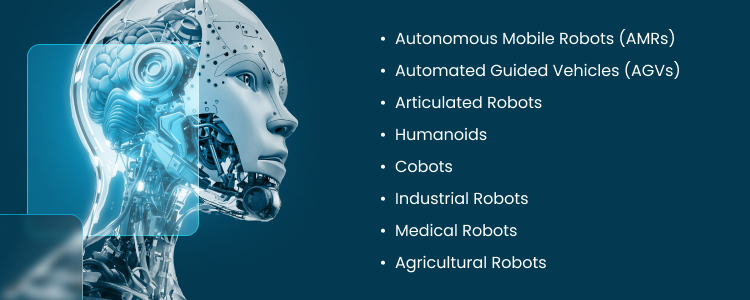
Autonomous Mobile Robots (AMRs)
Autonomous Mobile Robots (AMRs) use sensors and AI to navigate and perform tasks independently. They are widely used in warehouses for managing inventory and organizing goods. In hospitals, AMRs deliver medical supplies efficiently. They are also common in logistics, where they move items without needing human intervention.
Automated Guided Vehicles (AGVs)
Automated Guided Vehicles (AGVs) are robots that follow fixed paths using wires, lasers, or cameras. These robots are ideal for transporting heavy materials in factories and warehouses. AGVs excel in repetitive tasks, ensuring reliability and consistency in industrial environments.
Articulated Robots
Articulated robots have rotary joints, allowing precise movements. They resemble human arms and are used for tasks like welding and painting.
Humanoids
Humanoid robots look and act like humans. They are often used in customer service, caregiving, or research roles.
Cobots
Cobots, or collaborative robots, are built to work alongside humans safely. They have advanced sensors to avoid accidents and support teamwork. They are commonly seen in automotive and healthcare industries, where they handle repetitive tasks while humans focus on complex ones.
Industrial Robots
Industrial robots are stationary machines used in factories to handle heavy workloads. They perform tasks like welding, assembling products, and material handling. These robots are known for their speed and precision, reducing manufacturing production costs.
Medical Robots
Medical robots assist in surgeries, diagnostics, and patient rehabilitation. They provide precision in delicate procedures, reducing risks for patients. Robotic prosthetics and rehabilitation devices help patients regain mobility and improve recovery outcomes.
Agricultural Robots
Agricultural robots automate tasks such as planting, monitoring crops, and controlling pests. They save time and reduce the need for manual labor. By using data-driven techniques, these robots optimize yields and improve farming efficiency.
History of Robotics
Early Developments in Robotics
The origins of robotics date back to ancient times. The Greeks built mechanical devices like the Antikythera to predict eclipses. Leonardo da Vinci’s 15th-century mechanical knight showcased early engineering. During the Industrial Revolution, automation gained importance. This led to machines capable of performing repetitive tasks and paving the way for modern robotics.
Robotics in the 20th Century
The 20th century saw major advancements in robotics technology. In 1948, William Grey Walter created Elmer and Elsie, autonomous robots that could detect light and move accordingly. In the 1950s, George Devol’s Unimate, the first industrial robotic arm, transformed manufacturing. In 1972, the Stanford Research Institute introduced Shakey, the first robot to use sensors, cameras, and AI.
Modern Robotics Era
Modern robotics has grown rapidly due to advancements in AI and machine learning. In the 2000s, robots like Roomba were introduced for homes, and Boston Dynamics’ Atlas was used for complex tasks. By 2012, breakthroughs in neural networks improved robots’ decision-making abilities. Today, robots operate autonomously in the healthcare, logistics, and space exploration industries.
How Robotics Works
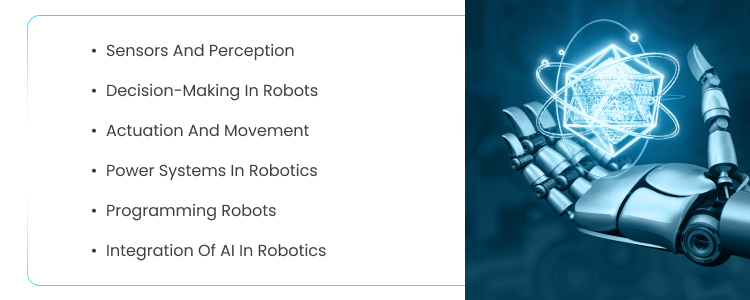
Sensors and Perception
Sensors are essential for robots to understand their surroundings. They collect data like light, sound, temperature, and position, which is then processed by the robot’s control system. Examples include cameras for vision, microphones for sound, and pressure sensors for touch. This data allows robots to respond intelligently to their environment.
Decision-Making in Robots
Robots rely on algorithms, AI, and machine learning to make decisions. These systems analyze data from sensors to determine the best action. For instance, in autonomous vehicles, decision-making algorithms process traffic data and obstacles to plan safe routes. This ability helps robots adapt to changing conditions.
Actuation and Movement
Actuators and motors enable robots to move and perform tasks. These components convert electrical signals into physical motion, such as rotating wheels or robotic arms. Depending on the application, Robots use different actuators, like pneumatic or hydraulic. Synchronizing movements ensures accuracy in complex tasks.
Power Systems in Robotics
Robots need reliable power sources to operate. Batteries, fuel cells, or solar energy power most robots. Industrial robots often use electrical power for consistency. Solar-powered robots, on the other hand, are better suited for outdoor tasks. Power systems influence efficiency and operational range.
Programming Robots
Programming enables robots to execute specific tasks. Methods like coding in Python or using tools like ROS (Robot Operating System) allow developers to set actions. Advanced robots can even learn new tasks through programming updates. This flexibility makes programming crucial for improving robot performance.
Integration of AI in Robotics
AI transforms robots into intelligent systems capable of learning and adapting. AI-powered robots analyze data, recognize patterns, and make decisions autonomously. For example, robots with natural language processing can communicate with humans. Others use predictive algorithms to detect and prevent failures in industrial settings.
Applications of Robotics
Industrial Robotics
Industrial robots excel in assembly, welding, and quality control tasks. They operate with speed and accuracy, making manufacturing efficient and cost-effective. These robots are widely used in industries such as automotive and electronics, where consistency is crucial.
Healthcare and Medical Robotics
Robots in healthcare assist in surgeries, rehabilitation, and patient care. Surgical robots perform minimally invasive procedures, improving precision and reducing recovery times. Rehabilitation robots help patients regain mobility after injuries. Caregiving robots provide emotional support to patients. These innovations improve the quality and accessibility of medical services.
Robotics in Agriculture
Agricultural robots automate labor-intensive tasks like planting, pest control, and harvesting. Equipped with sensors, they monitor soil and crop health. This helps optimize resources like water and fertilizers. By reducing manual labor and streamlining processes, these robots improve farming efficiency. They make modern agriculture more sustainable and cost-effective, helping meet global food demands.
Consumer Robotics
Consumer robots simplify daily tasks, saving time and effort. Devices like robotic vacuums clean homes, while robotic lawnmowers handle garden maintenance. Personal assistants, such as smart robots, help with tasks like scheduling and playing music.
Space Exploration Robotics
Space robots explore environments beyond human reach, collecting valuable data. Rovers like NASA’s Curiosity analyze planetary soil and climate, aiding future missions. Robotic arms on spacecraft assist astronauts with repairs and experiments. These robots withstand harsh conditions. They enable discoveries in space while reducing risks to human explorers.
Military and Defense Robotics
Military robots handle high-risk tasks like bomb disposal, surveillance, and reconnaissance. Autonomous drones gather intelligence and support soldiers in combat zones. By performing dangerous tasks remotely, these robots enhance mission safety and efficiency. In defense, robotics reduce human risk and strengthen national security through advanced technology.
Educational Robotics
Educational robots engage students with interactive learning in programming and engineering. They offer hands-on activities that simplify STEM concepts. Robots also assist researchers by exploring ecosystems and simulating natural phenomena. These tools spark creativity and problem-solving. They encourage students to innovate and create new technologies.
Robotics in Environmental Conservation
Robots help monitor ecosystems by collecting data on air, water, and soil quality. They also assist with pollution cleanup and disaster response. Robots can safely enter dangerous areas to find survivors, reducing risks to humans. Their expanding role in sustainability supports environmental protection and improves resource management.
Challenges in Robotics
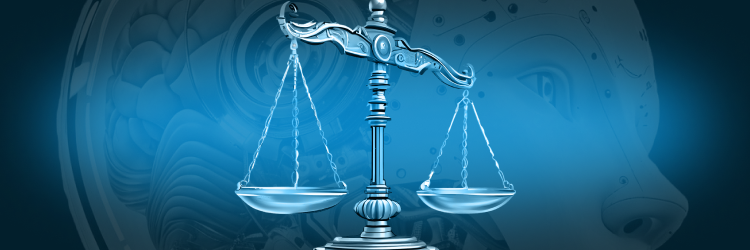
Ethical Considerations in Robotics
The ethics of robotics revolve around autonomy and human-robot interactions. Questions arise about how much control robots should have in sensitive tasks. Delegating responsibility to robots could lead to issues of accountability. Additionally, AI advancements raise concerns about privacy and freedom. There is also the risk of technology being misused in unethical ways, which could impact societal values.
Technical Limitations
Robots face challenges like limited power sources, hardware constraints, and adaptability issues. Most robots rely on batteries, which often lack longevity. Complex hardware, such as sensors and actuators, needs precise synchronization to function effectively. This complexity increases the risk of failure. Adapting to unstructured environments presents another challenge. It is particularly difficult for robots that operate wirelessly or in unpredictable conditions.
Economic Impact of Robotics
While robotics boosts efficiency, it also raises concerns about job displacement. Automated systems can replace human workers, transforming industries like manufacturing and logistics. Although robotics creates opportunities in technology development, the transition requires upskilling the workforce. This shift may widen economic inequalities. If industries fail to balance automation with human jobs, it will happen.
Regulatory Challenges
The robotics industry lacks universal standards and policies. The need for consistent regulations increases as robots enter fields like healthcare and defense. For instance, a robot vacuum has different compliance requirements than a surgical robot. Developing flexible and globally aligned policies is essential. These policies must adapt to new tech. They are for the responsible use of robotics.
Emerging Trends in Robotics
Human-Robot Collaboration (Cobots)
Cobots are changing how humans and machines work together. These robots handle repetitive tasks like assembly and packaging. They are safe, user-friendly, and adaptable. Cobots reduce physical strain on workers, making them a practical option for small businesses. Their increasing adoption highlights their role in improving workplace efficiency and safety.
Robotics and IoT Integration
The Internet of Things (IoT) is transforming robotics. Robots equipped with IoT sensors collect and share real-time data. This helps streamline tasks like inventory tracking and system coordination. For example, warehouse robots use IoT to update stock levels instantly. This combination creates smarter, more efficient systems that minimize errors.
Advances in AI-Powered Robots
AI-powered robots are becoming more adaptable due to advances in deep learning and neural networks. They can adjust to new tasks and environments. For example, they analyze data in real-time to improve performance. In healthcare, they assist with precise surgeries. In logistics, they streamline supply chains for greater efficiency.
Swarm Robotics
Swarm robotics involves many robots working together, inspired by insect colonies. Each robot acts independently but stays coordinated with the group. These systems are ideal for search-and-rescue missions and precision farming. By sharing tasks, swarm robots stay flexible and efficient—even if some units fail.
Biomechanics and Soft Robotics
Soft robotics designs flexible robots that mimic natural movements. They perform delicate tasks, such as helping in therapy or handling fragile items. Soft materials make them safe for human interaction. Advances in biomechanics help these robots adapt to different environments, leading to new and innovative uses.
Future of Robotics

Predictions for the Next Decade
The coming years promise breakthroughs in autonomous vehicles, advanced prosthetics, and AI-driven robotics. Self-driving cars and drones will revolutionize transportation, making it safer and faster. Robotic prosthetics, designed for precision and adaptability, will transform mobility for individuals. According to a PwC study, automation could impact 30% of jobs, highlighting the importance of adapting workplaces.
Impact of Robotics on Society
Robots are changing how people work and live. Automated systems now manage repetitive tasks, leaving humans to focus on creative problem-solving. Robots in manufacturing improve efficiency by speeding up production lines. Caregiving robots play a supportive role in healthcare, enhancing patient care. The PwC study highlights that 37% of workers worry about job loss. This emphasizes the growing need for retraining programs to help workers adapt to automation.
Investment and Research in Robotics
Investment in robotics is fueling innovation. Governments and private sectors are funding research into human-robot collaboration and energy-efficient designs. For instance, industries are exploring robotic process automation for repetitive tasks. It will improve accuracy and cut costs. These advancements aim to streamline workflows across fields like logistics, healthcare, and agriculture.
Ethical and Social Considerations
Ethical issues arise as robots become integral to daily life. Privacy concerns grow with data-collecting robots, and there’s a pressing need for unbiased algorithms. Regulatory frameworks must adapt to protect individual rights while encouraging innovation. Industries must prioritize transparency to ensure robots improve lives without compromising trust.
FAQs About Robotics
What is robotics in simple words?
Robotics combines science, engineering, and technology to create machines called robots.
What are the four types of robotics?
The four main types of robotics are Industrial Robots, which handle tasks like assembly and welding. Service Robots for cleaning or caregiving. Mobile Robots move independently, and Humanoid Robots mimic human actions. These categories drive efficiency, improve safety, and support various industries effectively.
How do you explain robotics to a child?
Robotics is like making a machine act like a human. For example, a robot can clean your room or help doctors. It uses artificial intelligence and computer science to learn how to complete tasks.
What is the main idea of robotics?
The main idea of robotics is to create machines that can replicate or enhance human tasks. Robots boost efficiency and accuracy. They also reduce the workload on humans, especially in healthcare and manufacturing.
How does AI enhance robotics?
Artificial intelligence helps robots make decisions, recognize objects, and adapt to new situations. For example, AI enables robots to assist humans in complex tasks like surgery or inventory management. Large Language Models (LLMs) further improve robots by enabling them to process and respond to language inputs, making human-robot interaction more seamless.
What industries use robotics the most?
Industries like manufacturing, healthcare, and agriculture are among the top robotics users. In manufacturing, robots help with assembly and quality control. In healthcare, they assist with surgeries and patient care. Agriculture benefits from robots in harvesting and pest control. These sectors rely on robotics to boost efficiency and productivity.
How are robots programmed?
Robots are programmed using coding languages like Python or C++. Engineers write instructions, often incorporating artificial intelligence, to guide the robot’s actions. Advanced systems use sensors and machine learning to adjust to their environment.
Final Thoughts
Robotics is changing industries and daily life. It has uses in manufacturing, healthcare, and agriculture. Robots perform tasks with precision, even amid challenges like ethics and adaptability. The global robotics market is driving innovation and efficiency. Advancing technology fosters collaboration between humans and machines. This progress holds immense potential to solve complex problems. Robotics is paving the way for smarter, more efficient solutions in various sectors.






















